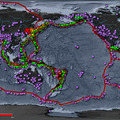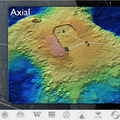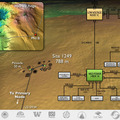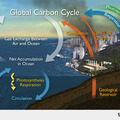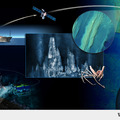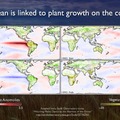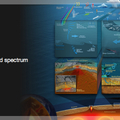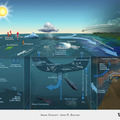Our challenge is to optimize the benefits and mitigate the risks of living on a planet dominated by two major energy sources: sunlight driving the atmosphere and much of the upper ocean, and internal heat driving plate tectonics and portions of the lower ocean.
Earthquakes in the NE Pacifi ...
Wednesday, July 22, 2009
Seismicity plays a critical role in shaping the face of our planet, in creation of natural disasters, and in the past it has dramatically affecte ...
Volcanoes and Life: Axial Se ...
Tuesday, July 21, 2009
For 4 billion years the global ocean has responded to and integrated the impacts of submarine volcanism. Here, the Earth, the oceans, and life co-ev ...
Methane Hydrates: Hydrate Ri ...
Tuesday, July 21, 2009
A significant amount of methane near the surface of the Earth is locked in gas hydrates buried in the shallow sediments of conti ...
Carbon Cycle
Thursday, July 16, 2009
The oceans modulate Earth's climate, influencing crop production on the continents, the health of fis ...
W.M. Keck-NEPTUNE Program
Wednesday, July 01, 2009
In 2001, the W.M. Keck Foundation provided a $5 million gift to the University of Washington for a project that focused on two basic elements ...
Climate Change
Tuesday, May 19, 2009
As the “environmental flywheel” of the planet, the oceans regulate climate and weather by redistributing heat between the equator and th ...
Oceans and Humans
Tuesday, May 19, 2009
Coastal zones in the U.S. are associated with trillion-dollar industries. Worldwide, over 2 billion people rely on seafood and products from the sea ...
Extreme Environments
Tuesday, May 19, 2009
Deep beneath the ocean waves exist some of the most extreme environments on our planet-–hydrothermal vents associated with submarine v ...
Oceans and Life
Monday, May 18, 2009
The global ocean covers 70 percent of the planetary surface and is the largest, most complex and most unexplored habitat for life on Earth. ...


